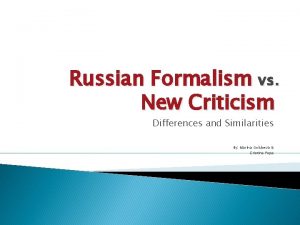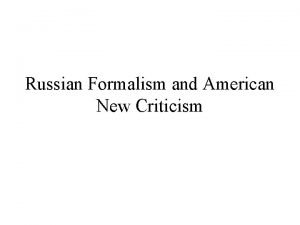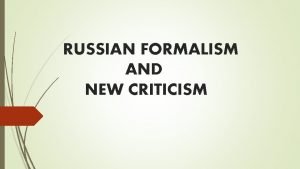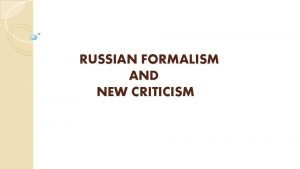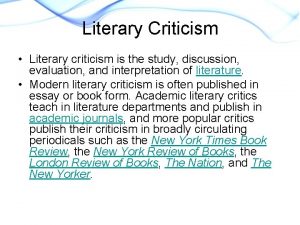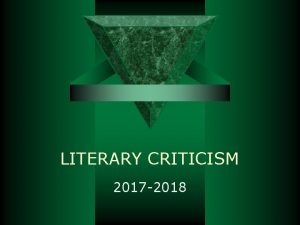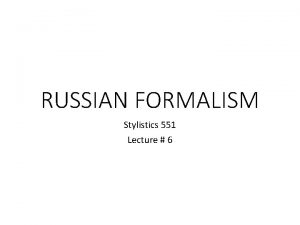Russian Formalism vs New Criticism Differences and Similarities






- Slides: 6

Russian Formalism vs. New Criticism Differences and Similarities By: Marina Golubeva & Cristina Popa

Formalism A school of literary theory that developed in the early 20 th century that gives attention to the form or structure of the work. Russian Formalism � � � New Criticism Focus on understanding the literary text through the text itself, independent of the author and the historical context. Distinguish literary language from ordinary language. Were criticized for ignoring the historical and sociological components that influenced the writing and reader reception of literature. Derive meaning, not from content, but in the structure and form of literature. Apply more to poetry than to any other genre of literature. Provide the reader to a close study of texts.

Historical Facts Russian Formalism � Influential school of literary � � criticism in Russia from the 1910 s to the 1930 s. Includes works of Viktor Shklovsky, Yuri Tynianov. Two distinct movements: the Moscow Linguistic Circle and OPOYAZ (the Society for the Study of Poetic Language) in St. Petersburg. New Criticism � Flourished in USA by the late 1930 s, and it extended to England. � The movement derived its name from John Crowe Ransom's 1941 book The New Criticism. � The work of English scholar I. A. Richards, especially his Practical Criticism and The Meaning of Meaning. � The critical essays of T. S. Eliot, such as "Tradition and the Individual Talent" and "Hamlet and His Problems“.

Russian Formalism � Language is used to create reality of fact. This process is called “defamiliarization”. � Differentiates between form and content. � Accords importance to the fabric of the literary text (structure, texture, language).

New Criticism � Focuses on the text and argued that literary language is connotative. � No separation of form and content (texts are unified by their devices, motifs, themes, and patterns). � Considers a text self-contained and autonomous.

Main Differences
